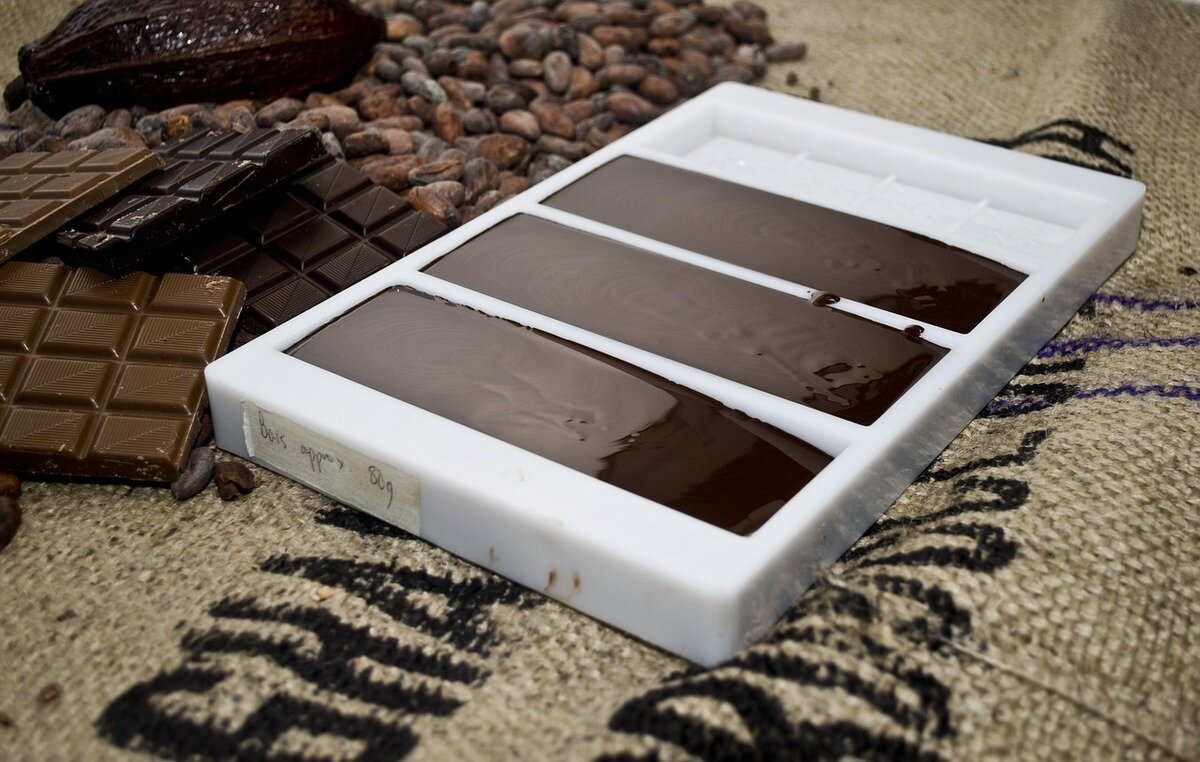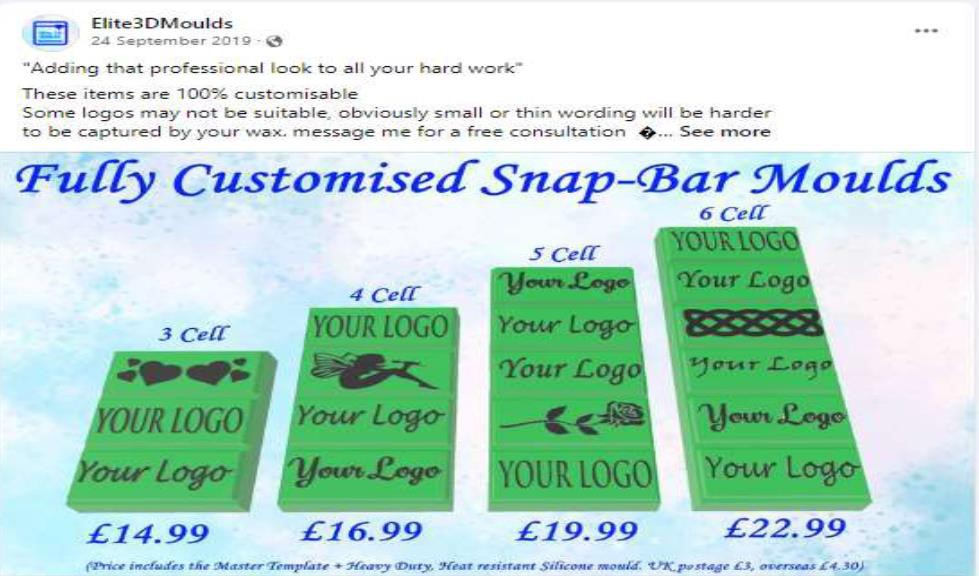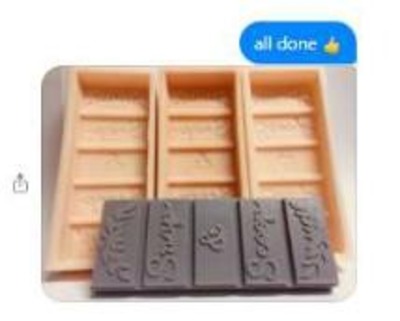
On 22nd January 2024, the UK Intellectual Property Office (UKIPO) issued a decision on a case which called into question the validity of a “snap bar mould”, the subject of UK design registration no. 6136045 in the name of Paul Cardy (Mr Cardy).
The design application had been filed on 10th May 2021 and showed a single image of a ‘”5-celled silicone snap bar mould”.
The illustration under the design registration was depicted below:
![]()
A “snap bar” is a bar that contains individual segments joined together but which can each be “snapped off”. These bars are used as moulds by the big manufacturers for producing chocolate bars. Mr Cardy took his inspiration from this when applying to register the mould as a design.
Within the scope of Mr Cardy’s registration the following two disclaimers were entered:-
“No claim is made for the colour shown, no claim is made for the material shown“.
Invalidity action by Corinne Twist
In order to try and remove Mr Cardy’s registered design right, an invalidity action was filed by Corinne Twist (Ms Twist) on 15th August 2022.
Ms Twist alleged that:
(a) the registered design created the “same overall impression” as earlier designs of such moulds, and
(b) the registered design was “not new” and had “lacked individual character” when the application was filed.
Under section 11ZA(1)(b) Registered Design Act 1949, the registration of a design may be declared invalid on the ground that it does not fulfil the requirements of section 1B of this Act.
In support of her claim, Ms Twist stated that snap moulds comprised of five sections had been used for years and she evidenced a non-exhaustive collection of examples to show this. These included social media posts, an Etsy listing and the details of an earlier registered design. The latter design was registered on 17th October 2016 and showed a product that Ms Twist claimed had been made with a five-cell snap bar mould.
At the start of her assessment, the Hearing Officer noted the small size of the image that Mr Cardy had submitted when registering his design and stated that “the quality of the image is such that it is not possible to magnify it without it becoming blurry.”
The Hearing Officer first looked at Mr Cardy’s use of the design and whether any of the evidence submitted by him destroyed the novelty of the contested design.
Mr Cardy stated that he had created the five-cell snap bar in its current form in 2016 and supported this by filing evidence of the 3D drawing using software showing the design and the date the mould was created, this being 5th August 2016 and the last modified on 28th September 2019. Although both dates were before the relevant date (the filing date of the design registration), the Hearing Officer decided that this did not prove that the mould had been publicly disclosed at that time.
In Mr Cardy’s further evidence he supplied an advertisement from his business’s Facebook account dated 24th September 2019 (below) and an excerpt of a chat with a customer dated December 2019.

The illustrations provided showed bars that would be made from the moulds but not the moulds themselves. Consequently, the Hearing Officer was unable to conclude the advertisement destroyed the novelty of the contested design.
As a result of the customer interaction Mr Cardy created a customised five-celled mould. The photograph below shows several moulds and the resulting bar.

The Hearing Officer stated that the cells of these moulds were plain and contained ridges at both the narrow and long ends, which would produce the “stepped” profile shown on the bars in the Facebook advertisement of 24th September 2019. The Hearing Officer concluded that there did not appear to be any “stepped” feature in the registered design because the mould joined the base at a right angle and, therefore, that the earlier designs provided by Cardy were not sufficiently similar to the contested design to conclude that the proprietor invalidated his own design.
A design must be “new” in order to benefit from a registration; any design made public before the relevant date would be tantamount to disclosure of the design, be this through publication, exhibition, used in trade or otherwise. If any disclosure is made by a designer, their licensee or successor in the title, at a date more than 12 months (the “grace period”) before applying to register a design then this would destroy the novelty.
In Mr Cardy’s case, the prior disclosures were not quite the same as the design he had registered and so this had not destroyed the novelty.
All evidence submitted by Ms Twist was accepted as prior art, comprising of social media posts and Etsy advertisements predating the date of application for the contested design registration.
In countering this, Mr Cardy stated that the Etsy advertisement was offering for sale an item made by a close colleague of his who had had permission to use the design. The Etsy listing did not say when the mould was first available, but the earliest review was dated 6th November 2020, less than 12 months before the relevant date.
Whilst a design may be new, it can still lack the necessary individual character when compared to the prior art. This would depend on the overall impression the design produces on the informed user, which should differ in overall impression on the same user when contemplating the prior art.
The Hearing Officer determined that the relevant sector for the contested design concerned individuals and businesses in the production of wax melts, going on to say that the informed user is an individual who makes wax snap bars for their own use or to give to friends, or a small trader who creates the bars for sale. Such a user would be particularly observant when choosing the moulds and be aware of the range of designs available.
The mould’s technical function is to produce a five-celled snap bar. This requires a hollow into which the wax can be poured, which is segmented toward the base to give five sections joined together at the base.
A design registration cannot protect features of a design that are solely dictated by the product’s technical function, such that those features enable it to perform its function. Within these constraints, the designer has the freedom to choose the aesthetics, such as the proportions of the bar, its shape, the thickness of its side and the thickness of its dividing sections.
When comparing the contested design with the prior art, the Hearing Officer determined that the differences were minor and trivial. In essence, she held the design would not create a different impression on the informed user and would leave a similar impression to the prior art on the same user.
Therefore, the contested design registration was invalidated and Ms Twist succeeded.
If you are considering protecting your product through design registration or are interested in challenging the validity of a third party design registration then get in touch with us now for a FREE consultation and let us help you.